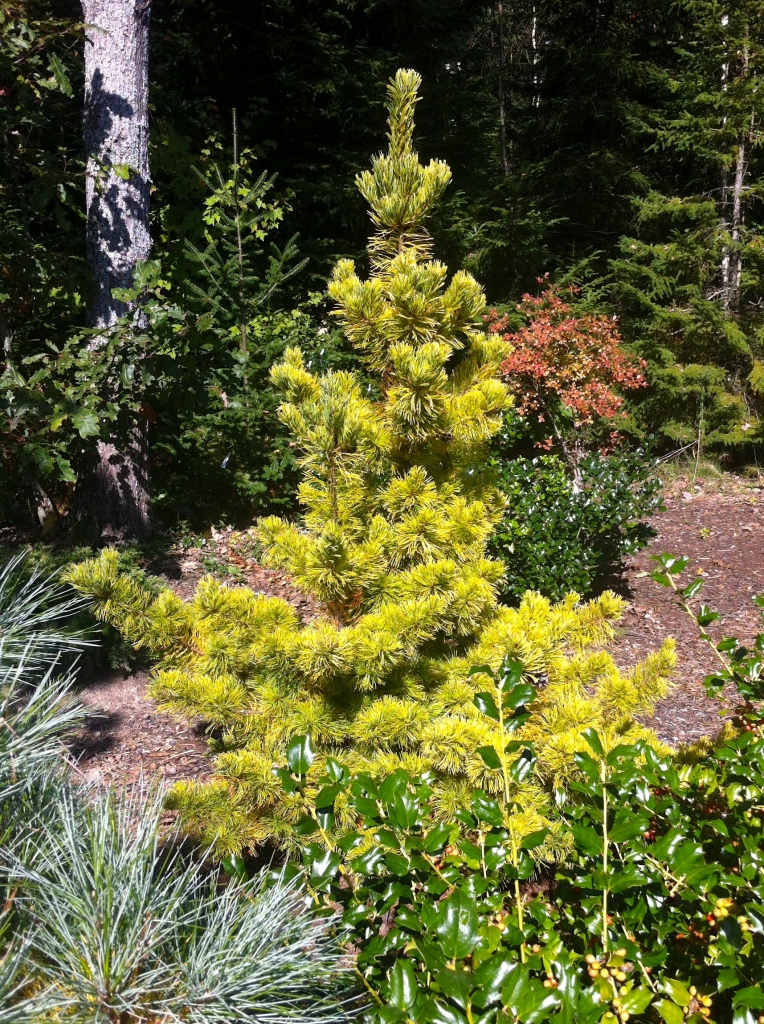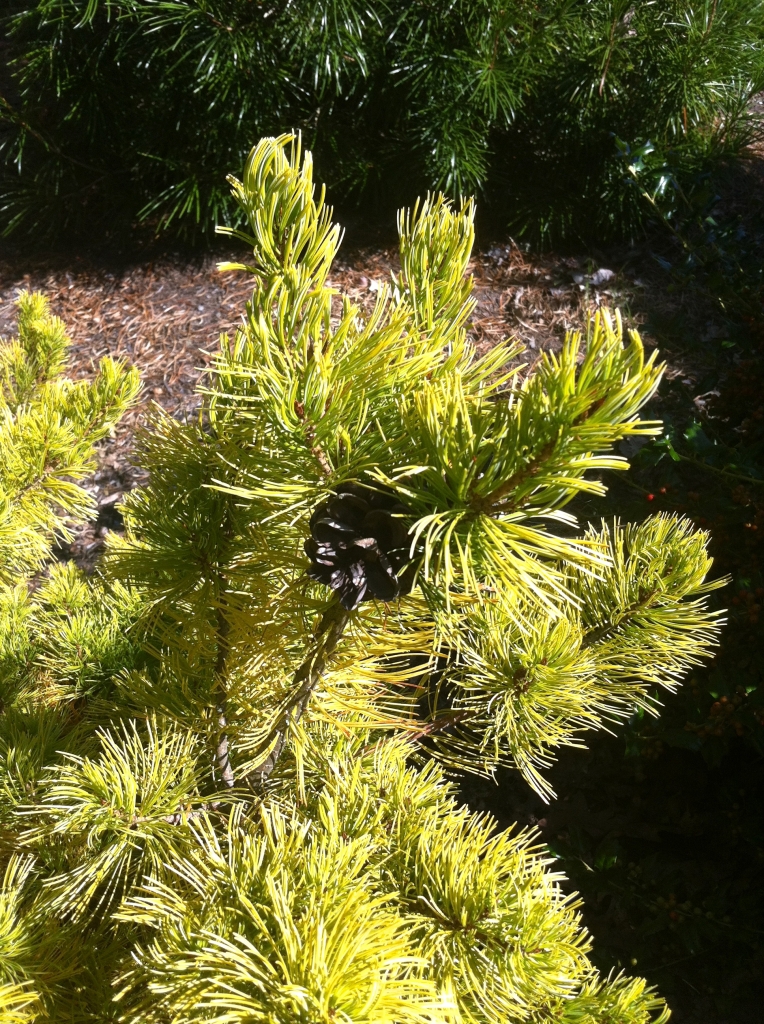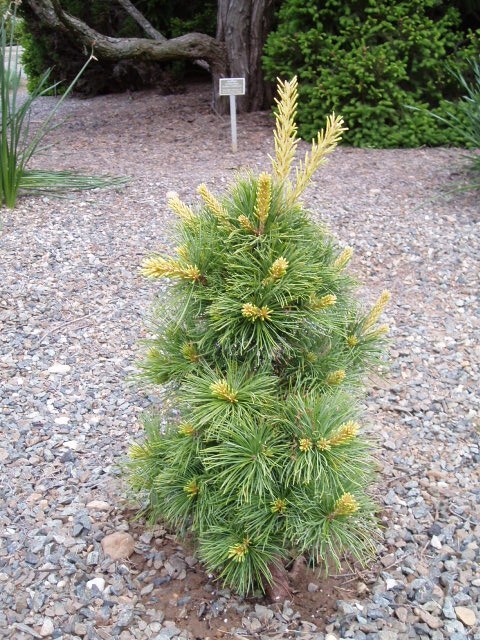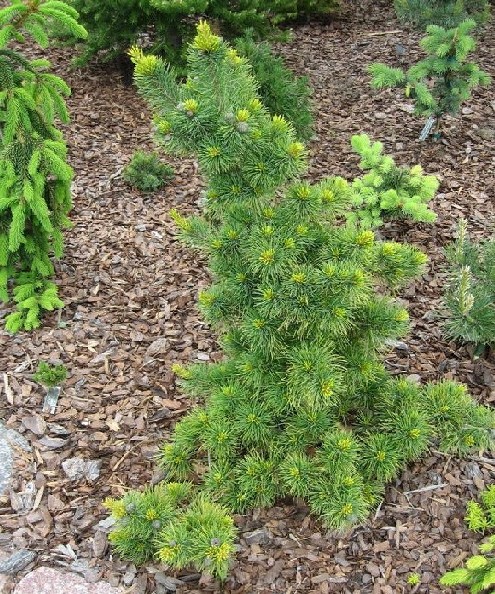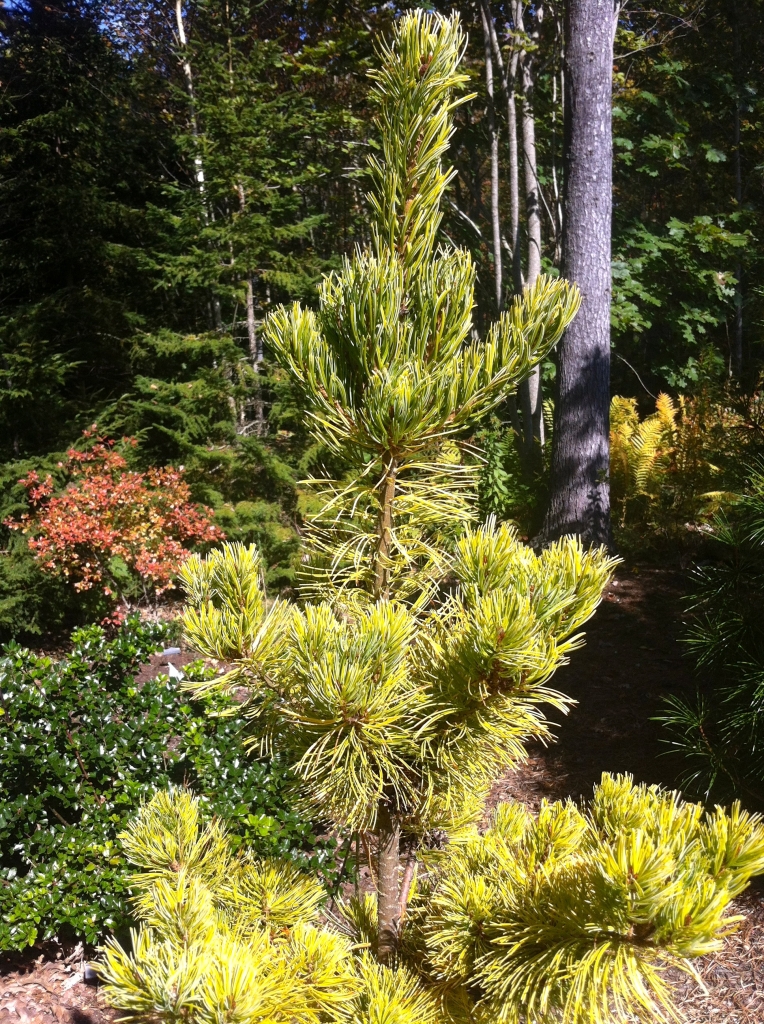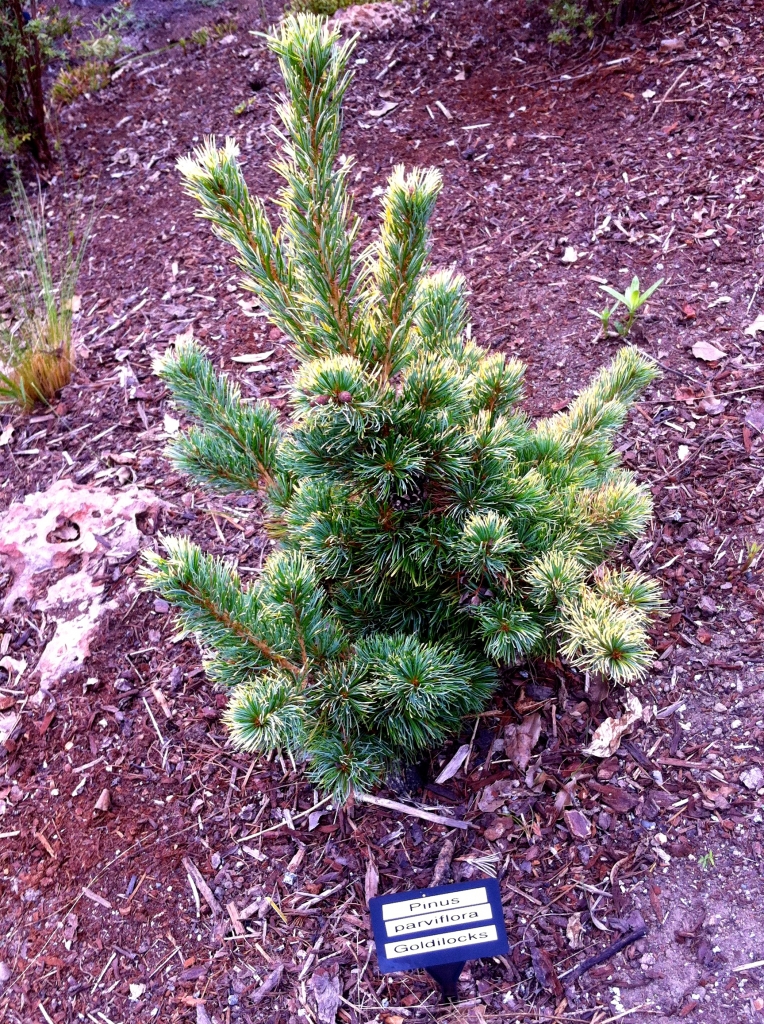This cultivar has a complex history and illustrates why taxonomists can be difficult to be around.
According to the Royal Horticultural Society Encyclopedia of Conifers, Pinus parviflora 'Goldylocks' is synonymous with P. parviflora 'Dr. Landis Gold' and the misspelled 'Goldilocks' but the correct name should be Pinus parviflora 'Tenysu kazu.'
Originating in Japan, it was brought to Canada by a collector, Dr. Henry Landis, around 1980 and upon his death, some of his plants were purchased by John and David Verkade of Neshanic Station, New Jersday, who recall this specimen being labeled 'Tensu kasu'. With the assistance of Joel Springarn, they propagated the plant in the 1980s but renamed it 'Dr. Landis Gold'. Sometime before 1999, Billy Schwartz, a colleague of Bob Fincham, brought back a cultivar from Japan with many of the same characteristics which Schwartz called 'Goldilocks' (sic). Fincham has propagated Schwartz' specimen and believes it to be the same as 'Tenysu kazu'. The marketing appeal of the name Goldylocks seems to be winning out as this is what it is called by most growers today - the name 'Tenysu kazu' being reserved for taxonomic purists and botanical gardens.
[ From Robert L. Fincham's Coenosium Gardens' Catalog of Rare Plants For the Discriminating Person, No. 17 / January 2006 ] a dwarf, mounding selection with very pronounced creamy yellow variegation on the outer ends of all its needles; the color is enhanced by the full sun. It can produce shoots that grow up to about 6" per year.
______________________________________________________
As a side note, an ACS member has written, "of many P.parviflora cultivars flourishing in zone 4a, Minnesota, indicating that at the very minimum, some cultivars exhibit more hardiness than expected."
